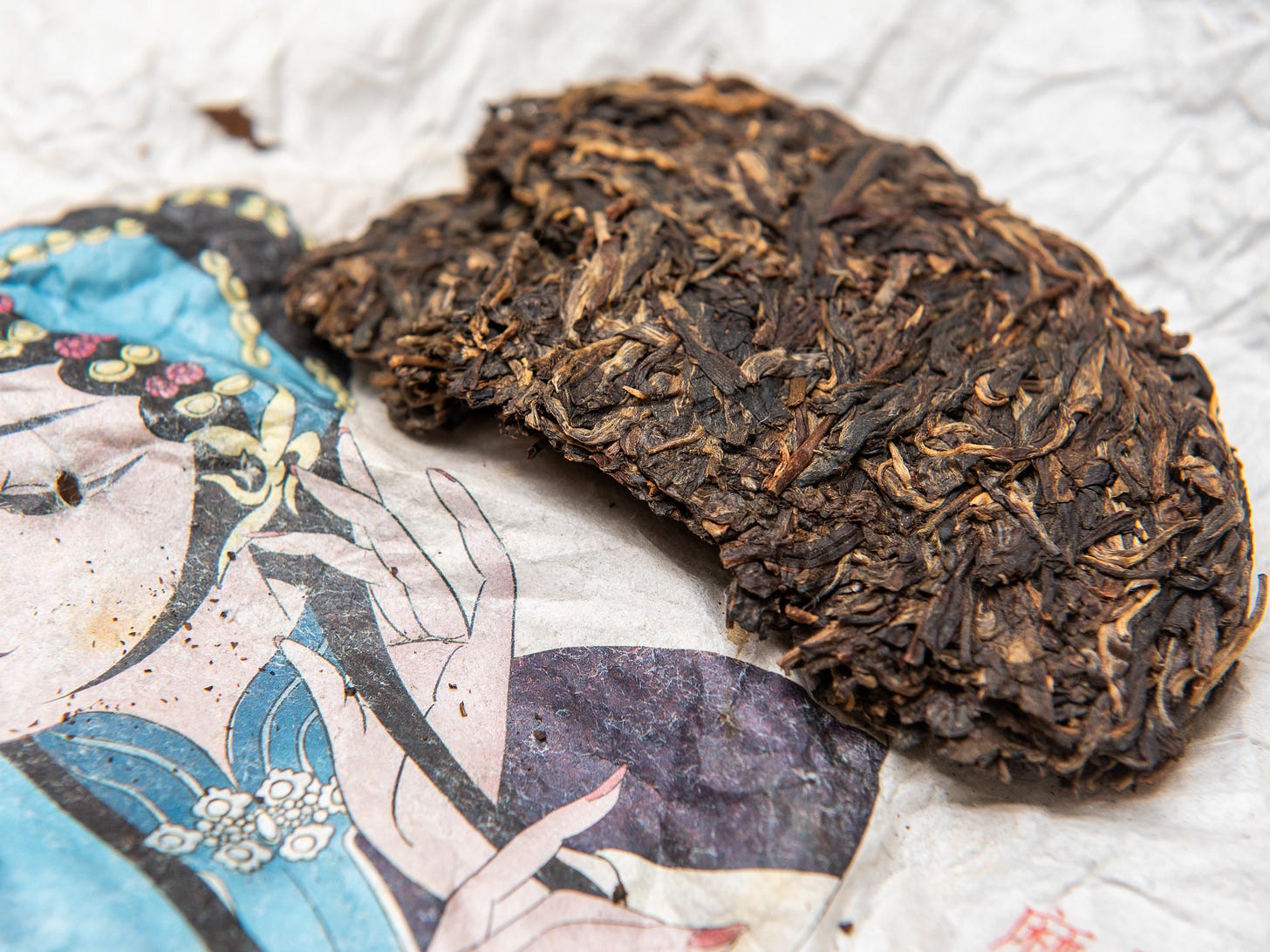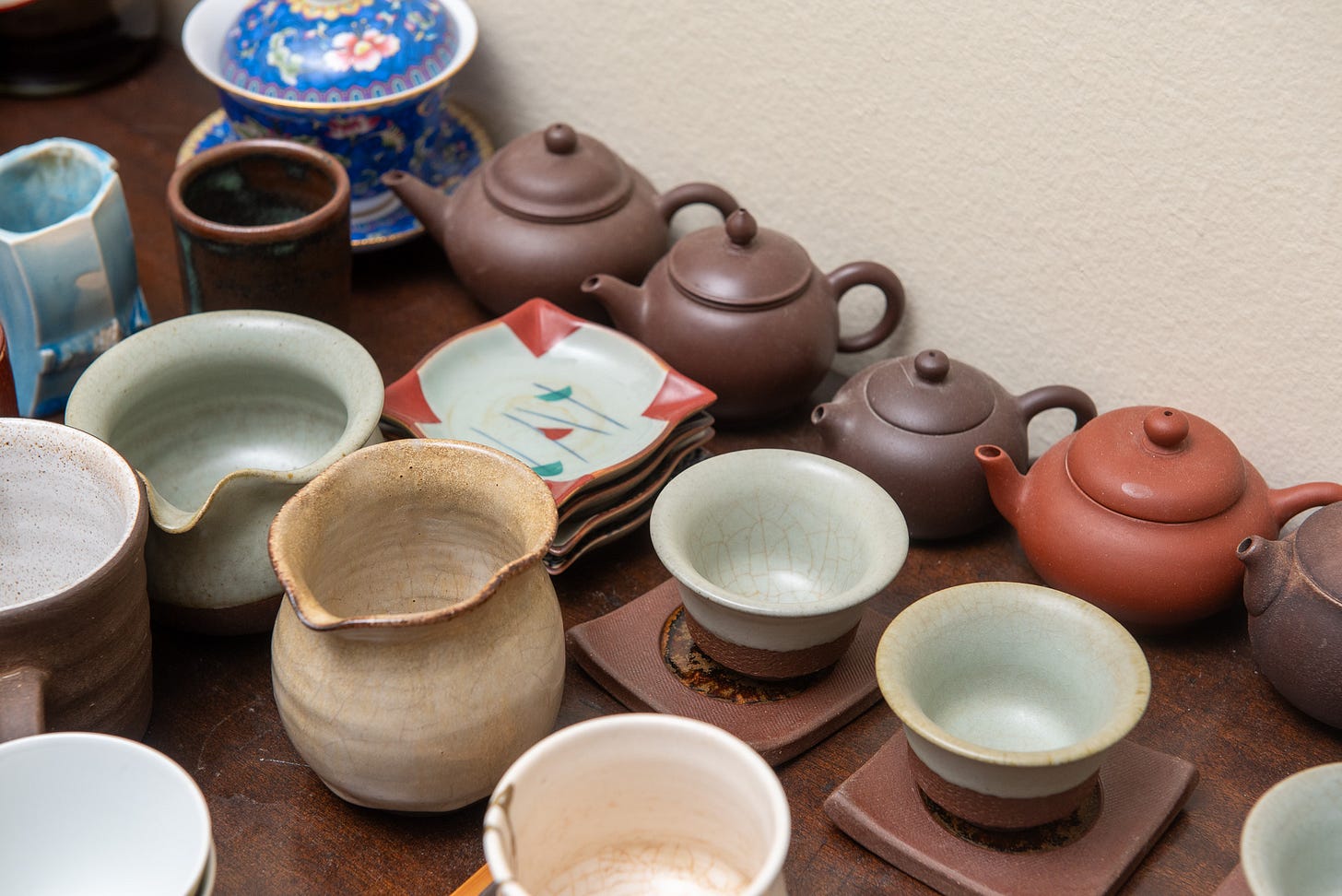A tour of my tea storage setup
Puer that punches above its price tag + a hoarder’s cry for help.
Has it been 10 years already?
UPDATE APRIL 10, 2025: A reader has alerted me that although the Tea Urchin website currently accepts orders, the company seems to have gone dark with no response to their request for shipping confirmation. I’ve removed the links to the company website and recommend you do not try to purchase tea from them at this time.
The tea: 2015 Mahei spring puer, sold by Tea Urchin. $66 for 200g.
So many world-historical events have happened since 2015 that the year feels like an ancestral memory. I bought this raw puer when it was still young and spry in 2017. I loved it then and thought it a nice value for the price. Now that it’s 10 years old, I’m glad I held on to enough of my cake to drink in its middle age. This is the joy of collecting aged tea: it matures with us. If you’re curious about puer and want to explore the subject deeper, I consider this tea a relative bargain for well processed material with good strength and depth. It can easily go for 20 infusions.
Your freshly purchased cake will probably look and taste different than mine, as it will have spent more time in Tea Urchin’s Shanghai warehouse. My storage is cooler and drier by comparison, so the rate of maturation is slower. Still, I can taste the notes of leather and honey that this kind of tea develops over time, and the texture is silky and rich.
The source: Tea Urchin is a standout source for young raw puer. I’ve covered their excellent Laoman’e tea before and you can find more about the company there. This tea is said to have come from Mahei, a village in Yunnan’s Yiwu region. Yiwu teas have a reputation for being soft, floral, and elegant in flavor. This can be broadly true—a Mahei tea definitely won’t taste as rough and rowdy as the kinds produced in Laoman’e—but tea regions are diverse enough to resist neat categorization. For what it’s worth, I taste leather and vanilla notes in this that I associate with some Yiwu teas. Try it and 10 other purported Yiwu puers and see what commonalities you find.
To brew: A small gaiwan or teapot is a must for this one. When steeped for longer periods in a large pot, bitter and tannic flavors dominate. But if you use 5 grams in a wee 80 milliliter pot (1g/16ml) and steep with boiling water for just a few seconds at a time, the tea truly comes to life. You may notice a refreshing sweetness with hints of sandalwood that hangs around your mouth by the third or fourth steep. Tea people call the sensation huigan, or “returning sweetness,” which is one of the brew’s many gifts even minutes after you’ve drained your cup.
On this episode of MTeaV Cribs…
Every now and then a reader asks for a virtual peek into my tea room beyond the tight shots I share here. I frame my Leafhopper photos the way I do for a reason: my apartment is a hoarder’s den of plants, tea, and old junk antiques, and I’d rather keep most of that mess out of view. But there’s value in seeing other peoples’ setups and learning what works for them and what doesn’t. I sure benefitted from seeing tea bloggers’ setups 15 years ago, so it seems only fair to lift the veil on my own. Ready for some parasocial packratting? Let’s take a journey together.
Most of my teaware lives on this credenza I inherited from my great aunt. It weighs a million pounds and will outlive me. It’s also my living room bar.
Honestly, I consider this a pretty tight collection of teapots. I use a small handful regularly and reach for others when I feel like it. Some pots are dedicated to types of tea that seem to do well in them. Aged puer goes into one and dancong oolongs into another. I have a couple tiny pots that I use for small doses of expensive teas. The large glass pot is great for larger and more casual brews. Other wares have essentially regressed to photo props. These are “tuition” pieces I bought earlier in my tea education that aren’t that great to use. If I get any new teaware I love, I sell or give away some of the older stuff to make room. “One in, one out” is the current rule to maintain some sense of order.
Keep reading with a 7-day free trial
Subscribe to Leafhopper to keep reading this post and get 7 days of free access to the full post archives.









